Compare refrigerators in New Zealand at Canstar Blue. LG, Samsung, Fisher & Paykel, Panasonic, Bosch and Haier were compared on Overall Satisfaction, Features, Food Freshness, Internal Layout, Quality of Fittings & Fixtures, Reliability, Design and Value for Money.
See our Ratings Methodology.

LG is the cool choice for the best fridges, rated No.1 for customer satisfaction by Kiwi consumers!

Our review compares fridges on customer satisfaction, so you can discover what other Kiwis think about our compared refrigerator brands before you go ahead and make a purchase. Think of it like asking hundreds of your closest friends, family and colleagues which make of fridge they think is best!
Canstar Blue surveyed 707 Kiwis who had bought a refrigerator over the past three years for their feedback on the fridge they bought.
Respondents rate their satisfaction with their fridge brands from zero to ten, where zero is extremely dissatisfied and ten is extremely satisfied. Brand satisfaction was rated by respondents on the following criteria:
The winning brand is the one that receives the highest Overall Satisfaction rating once all the scores from the Overall Satisfaction criteria are combined and averaged.
Brands must have received at least 30 responses to be included, so not all brands available in the market have been compared in this survey. The brands rated in this survey are listed below in order of best overall satisfaction.
Find more information on our Most Satisfied Customer methodology.

Topping our 2025 fridge ratings, LG earns its Refrigerator Award due to a fantastic set of ratings from its customers, including top 5-Star ratings for Value for Money and Quality of Fittings & Fixtures.
LG’s range of fridges covers 14 French-door models, 11 side-by-side models and 13 fridge-freezers: two top-mounted and 11 bottom-mounted. LG’s French-door models cost between $3000 and $6000, while more standard fridge-freezers range from around $1000 for a 194L single-door fridge with a freezer compartment, to around $1700 for a 420L bottom-freezer model. One of LG’s top-of-the-range model features an InstaView window in its door and a water dispenser, and costs approx $4150.
Samsung retails a large range of fridges. Prices start from around $900, for a basic 236L top-mount fridge-freezer, and max out around $8200 for a 636L quad-door smart fridge with beverage centre, dual ice maker and AI Family Hub.
Fisher & Paykel is a brand synonymous with appliances in NZ, and it sells an impressive range of fridges, including fridge-only models, bottom-freezer fridges, quad-door and French-door models. In addition to free-standing units, it also has models designed to integrate into fitted kitchens. Compared to other fridge brands, Fisher & Paykel’s cheapest models are still quite expensive, starting around $2100 for a 351L fridge-freezer. Its mid-range models cost around $5000-$6000 and top-of-the-range fridges cost upwards of $19,000.
Panasonic sells a range of 14 fridges here in NZ. Its standard range of fridge-freezers covers seven models, starting from around $1500 for a 306L top-mount fridge-freezer and going up to approx $2100 for a 377L bottom-mounted freezer model with water dispenser. Panasonic also has a range of premium Prime+ models, which tops out at the Prime+ Edition 616L French-door refrigerator with in-door water dispenser (approx $3500).
German appliance manufacturer Bosch is synonymous with quality and design. It retails two fridge models and five fridge-freezers here in NZ, encompassing singe and French-door models. Bosch’s smallest, cheapest model is a 351L fridge-freezer that sells for around $2100, while its 605L Series 6 French-door fridge retails from around $3200.
Haier is often regarded as a more affordable option than its sister brand, Fisher & Paykel. And when it comes to fridges, Haier’s range is certainly less pricey; all models retail for under $4800. Haier’s quad-door fridges cost from $2500, for a 463L model, up to approx $4800 for a 623L unit with a plumbed water and ice dispenser. Regular two-door fridges start around $900 for a 197L fridge and go up to around $2200 for 433L models.
Not all brands in the market qualify for our ratings (based on minimum survey sample size), but that doesn’t mean they’re not worth considering. Here are more brands to check out before making a purchase decision.

Beko is a Turkish company that is one of Europe’s biggest appliance manufacturers. Here it sells a range of eight fridge-freezer and two fridge-only units. Prices start at around $930 for a 193L bottom-mount fridge-freezer. Beko’s largest 569 quad-door fridge-freezer with ice and water costs approx $3400.

Electrolux is a Swedish appliance company. It’s a premium brand that in NZ sells mainly French-door fridge freezers ranging from a 562L model for around $3700 to a 681L unit for $6200 approx.

Midea is a Chinese multi-national electronics company that in NZ sells a range of budget-friendly home appliances, including bar fridges and fridge-freezers. Midea’s 87L bar fridge-freezer costs just $289, while its cheapest fridge-freezer, the Imprasio 181L, is just $500. Midea’s most expensive fridge is its new 584L fridge-freezer, which boasts a black-glass finish and costs $1499.

Miele is a German premium brand that manufactures a wide range of home appliances. Its range of fridges in NZ comprises four free-standing fridges that cost between $3199 and $3699, four integrated fridges, $5149-$5599, one freestanding fridge-freezer, $3199, and four integrated fridge-freezers, $3799-$6199.

Mitsubishi Electric’s range of fridges encompasses multi-drawer and French-door models. Its has one 421L bottom-mounted fridge-freezer, for around $3300, plus 580L and 635L quad-door models, priced up to $6300. Its French-door fridges come in two-drawer and four-door models. These high-end fridges range in price from around $5200 for 564L two-drawer models to 700L four-drawer fridge-freezers, $6700.

Westinghouse is an Australian brand that has been producing quality appliances for over 60 years. Its website features a range of 35 fridge models, although not all are readily available in high street retailers. Prices start at around $720 for a small 120L bar fridge, and $1500 for a 308L fridge-freezer. Westinghouse’s larger models retail between $3000-$4500, for example approx $4230 for a Westinghouse 565L stainless steel French-door fridge-freezer.
When choosing a fridge, there is a lot to consider. Of course, the main things are your budget, the size of fridge you need to meet your household needs and, most importantly, the size of fridge that will fit in your kitchen. Always measure accurately before you buy, and take into consideration the room required for a fridge’s door to open fully.
However, when it comes down to the specifics of each fridge brand, the respondents in our survey were clear about which qualities mattered to them most.
Given that fridges are kitchen workhorses, it’s no surprise to see that the most important factor by far is Reliability, cited by a third (32%) of those in our survey.
While Value for Money is always important, the key factor for a quarter of those in our research (23%), Quality of Fittings & Fixtures also places highly.
As a fridge is open and shut multiple times a day, as people delve inside for food and drinks, it makes sense that it can stand constant use.
What is surprising is that Food Freshness doesn’t rate more highly. Although that’s probably an indication that all the refrigerators in our survey do such a great job of keeping food fresh that consumers don’t have to worry about theirs fridges’ ability to chill out!
Here’s the full rundown of what the fridge buyers in our survey say are the main things they consider when rating their purchases:
When choosing a fridge, energy efficiency is an important consideration, one that can save you a considerable amount of money over the lifetime of your appliance.

Finding an energy-efficient fridge is simple. Just check its Energy Rating Label. The more stars, the more energy-efficient the fridge.
The label also shows an estimated kWh usage per year, which if you know how much you’re paying for power, can help you work out the dollar cost of using your fridge.
Keep in mind that cheap and basic appliances tend to be less energy-efficient. So to lower your running costs, you’ll likely have to raise your upfront costs. However, as a fridge is turned on all the time, choosing an energy-efficient model is a wise investment.
To do the calculations below we’ve used the average national average power price of 33.6c p/kWh.
Consumers have a huge range of fridge/freezer options to choose from in the 350L to 450L bracket. We’ve gone straight down the middle, and taken a look at the running costs that can be expected for a 400L (approx) model.
| Star rating | Annual energy use | Annual running cost |
| 3 Star
282L fridge |
404 kWh | $136 |
| 4.5 Star
300L fridge |
291 kWh | $98 |
Based on the above usage, the running costs over five years are:
This is a total difference in running costs of $190.
Our fridges run all day, every day. And even energy-efficient refrigerators can burn extra power if not maintained and used correctly. So, some key tips to lowering the energy use of your fridge are:
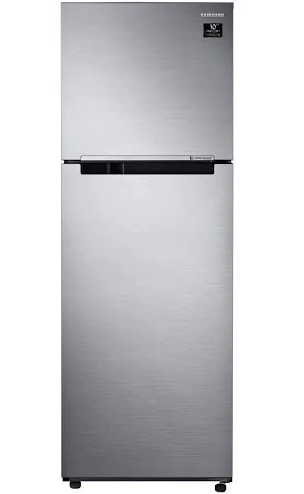
This type of fridge is the most common, meaning it’s also generally the cheapest, and has the widest range on offer. It’s a single column refrigerator, with the top third (approximately) dedicated to a separate freezer compartment.
The downside is that top freezer models are generally rather low on features, and less thought is given to their appearance.
It’s worth noting that these fridges are some of the most efficient. They are about 10%-25% more efficient than fridges with bottom or side-mounted freezers.
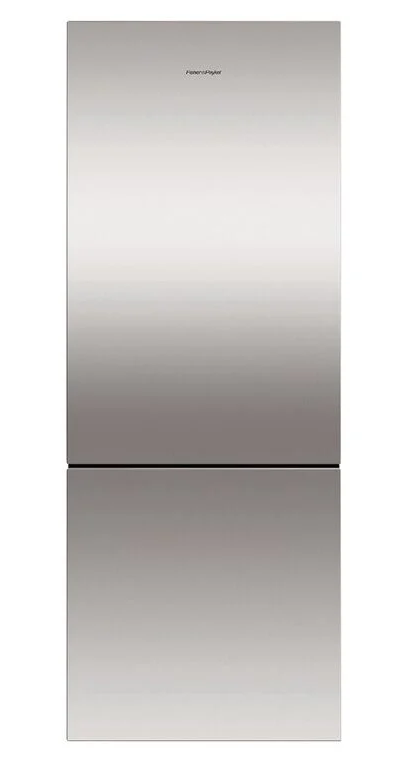
As its name suggests, a bottom-mounted fridge is just like a top-mounted fridge, but with a freezer compartment at the bottom. At lower prices, these type of fridges tend to be less common that top-mounted fridges.
While these types of fridges are often not quite as efficient as top-mounted fridges, access to the fridge is easier, as it’s at eye-level.
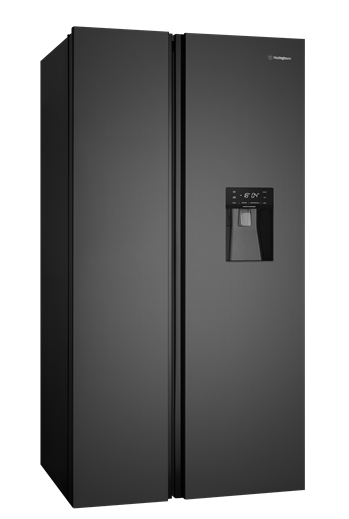
These fridges are essentially wider-than-usual fridges split in half: one half for the fridge, the other for the freezer. For those who tend to freeze leftovers in high volume, or exist on freezer food, this type of fridge may be ideal. Some side-by-side fridges allocate slightly more room for the fridge section, however they tend to have freezers larger than top- or bottom-mounted fridge-freezers. Note that the doors open from the centre, rather than from the side, meaning less spatial clearance is required to swing the fridge door(s) open.
Also worth noting is that side-by-side models often come with features such as water, ice dispensers, and external user interface panels, which some may view as desirable features.
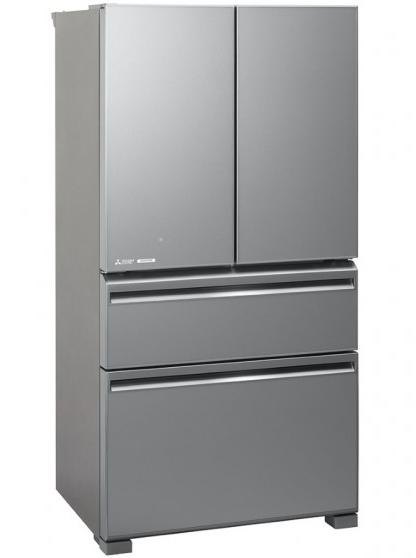 French-door
French-doorPossibly the most versatile (and most expensive) types of fridges, French-door fridges are similar in width to side-by-side models, and have the entire bottom third devoted to freezer space, just like a bottom-freezer model. As with side-by-side fridges, the fridge door is split into two, opening from the centre.
Some French-door fridges have a single door for the freezer section. But some split the freezer section the same way as the fridge section, making for a grand total of four doors.
The main advantage to this slightly elaborate door configuration is that opening one of the half doors lets out less cold air. The other advantage is that, as with a side-by-side model, the split doors mean less clearance is required between the fridge and your bench/other kitchen installations. In summary, French-door fridges are:
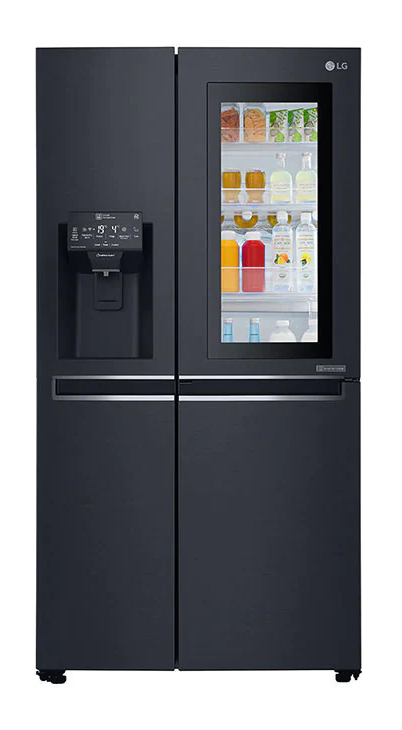 Types of refrigerators with features
Types of refrigerators with featuresThere’s no doubt that manufacturers have become more adventurous with their refrigerators, driven by the consumer demand for something that does a little more than just keep food and drinks cold, or frozen.
There are fridges with glass panel features that let you look inside without opening the door. Other notable fridge features that have become common lately include flexible spacing, allowing you to swap or change certain sections to suit your own food storage preferences. And multi-zone climate and humidity settings, which let you create separate cooling spaces for certain types of foods or drinks.
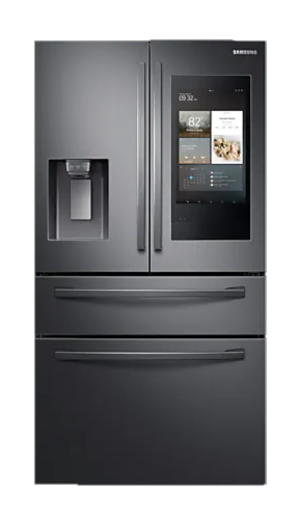
Samsung’s Family Hub French-door fridge, for example, has a touch screen on its door. You can link your smartphone and synchronise it to show photos, post stickers, draw pictures and type or hand-write notes. It’s even possible to add a music player. Or even watch TV while cooking. An app can display what’s on your smartphone or Samsung Smart TV without having to buy or install any additional software. In summary, smart fridges are:
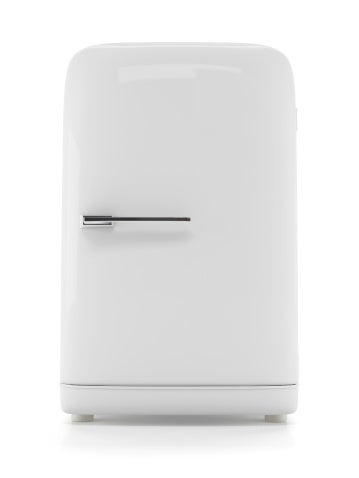
Bar fridges benefit from being cheap to purchase, easy to transport, and they get the job done when it comes to keeping drinks cold.
Many are under 100L, and some even smaller. However, although they might seem a good idea, bar fridges are rather energy-inefficient relative to their size. In fact, they often use similar amounts of electricity as regular-sized fridges. In summary, bar fridges are:
 This report was written by Canstar’s Editor, Bruce Pitchers. Bruce has three decades’ experience as a journalist and has worked for major media companies in the UK and Australasia, including ACP, Bauer Media Group, Fairfax, Pacific Magazines, News Corp and TVNZ. Prior to Canstar, he worked as a freelancer, including for The Australian Financial Review, the NZ Financial Markets Authority, and for real estate companies on both sides of the Tasman.
This report was written by Canstar’s Editor, Bruce Pitchers. Bruce has three decades’ experience as a journalist and has worked for major media companies in the UK and Australasia, including ACP, Bauer Media Group, Fairfax, Pacific Magazines, News Corp and TVNZ. Prior to Canstar, he worked as a freelancer, including for The Australian Financial Review, the NZ Financial Markets Authority, and for real estate companies on both sides of the Tasman.
Energy efficiency was important factor: 47%
Have a second, old fridge still in use: 23%
Bought fridge with an ice dispenser: 21%
Bought a fridge with a water dispenser: 19%
Canstar Blue surveyed 2535 New Zealand consumers across a range of categories to measure and track customer satisfaction, via ISO 26362 accredited research panels managed by PureProfile. The outcomes reported are the results from respondents who had bought a new fridge over the past three years. In this case, 707 New Zealanders. Brands must have received at least 30 responses to be included. Results are comparative and it should be noted that brands receiving three stars have still achieved a satisfaction measure of at least six out of 10. Not all brands available in the market have been compared in this survey. The ratings table is first sorted by star ratings and then by mean overall satisfaction. A rated brand may receive a ‘N/A’ (Not Applicable) rating if it does not receive the minimum number of responses for that criterion.
The past winners from Canstar Blue’s Refrigerators ratings:
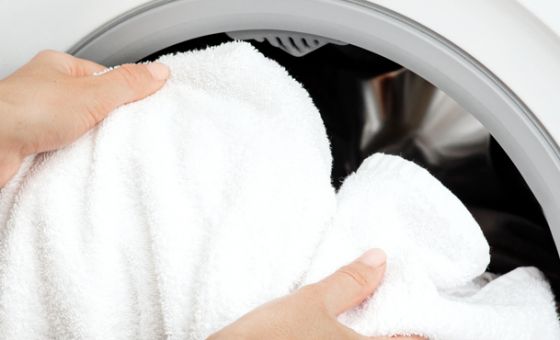
Appliances - June 23rd
KEY POINT
According to 452 New Zealand tumble dryer buyers who took part in Canstar’s 2025 Dryer Award survey, LG is the best dryer brand in New Zealand for delivering consumer satisfaction.
If you’re in the …
– Read more
Appliances - March 28th
Why do I need to clean my water bottle/travel mug?
Cleaning your water bottle or travel mug regularly is essential for several reasons:
Hygiene: bacteria, mould, and other microorganisms can accumulate in your water bottle or …
– Read more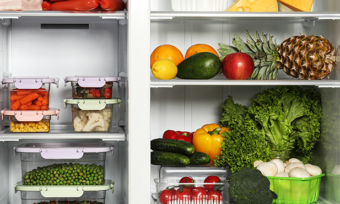
Appliances - March 26th
What is a top fridge-freezer?
A top fridge-freezer refers to a type of refrigerator-freezer unit where the freezer compartment is located at the top of the appliance, above the refrigerator compartment. In this design, the freezer …
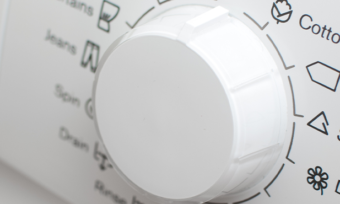
Appliances - March 18th
Why do delicates need to be washed differently?
Delicate items, like silk blouses or lace lingerie, need special care when washing because they’re made of fragile fabrics or have intricate details. Regular washing machines and harsh …
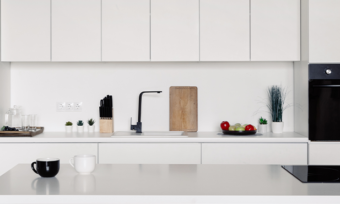
Appliances - February 20th
Kitchen appliances
Air fryers
3.75L Air Fryer ($85)
If it’s your first time buying an air fryer, or you’re not willing to break the bank, consider Kmart’s affordable 3.75L air fryer. Prepare delicious, crispy fries, nuggets and more …